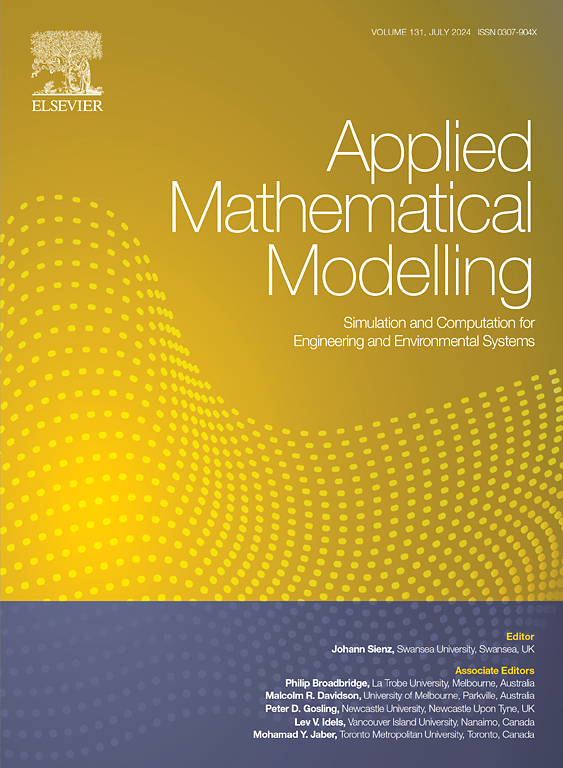Free vibration solutions of rotationally restrained stepped thick rectangular plates utilizing a symplectic analytical framework
IF 4.4
2区 工程技术
Q1 ENGINEERING, MULTIDISCIPLINARY
引用次数: 0
Abstract
The rotationally restrained stepped thick plates are widely applied as structural components for their merits on flexible rigidity distributions. However, the benchmark analytical free vibration solutions were intractable in terms of the complexities in treating the abrupt thickness changes and the rotationally restrained constraints involved. In this work, we develop an innovative symplectic analytical framework to tackle such issues. The free vibration governing equation of stepped thick plates is firstly converted into the symplectic space, and then solved by the integration of the subdomain division technique and the symplectic superposition method. The final analytical solutions are accessible by summing the subplates’ solutions. The solution process is rigorous and rational, meaning no solution forms need to be assumed in advance. On the basis of the developed framework, a series of new analytical solutions are presented with validations. Furthermore, comprehensive parametric analyses and discussions are conducted, which may provide guidance for a rapid structural design and optimization of stepped plates.
求助全文
约1分钟内获得全文
求助全文
来源期刊

Applied Mathematical Modelling
数学-工程:综合
CiteScore
9.80
自引率
8.00%
发文量
508
审稿时长
43 days
期刊介绍:
Applied Mathematical Modelling focuses on research related to the mathematical modelling of engineering and environmental processes, manufacturing, and industrial systems. A significant emerging area of research activity involves multiphysics processes, and contributions in this area are particularly encouraged.
This influential publication covers a wide spectrum of subjects including heat transfer, fluid mechanics, CFD, and transport phenomena; solid mechanics and mechanics of metals; electromagnets and MHD; reliability modelling and system optimization; finite volume, finite element, and boundary element procedures; modelling of inventory, industrial, manufacturing and logistics systems for viable decision making; civil engineering systems and structures; mineral and energy resources; relevant software engineering issues associated with CAD and CAE; and materials and metallurgical engineering.
Applied Mathematical Modelling is primarily interested in papers developing increased insights into real-world problems through novel mathematical modelling, novel applications or a combination of these. Papers employing existing numerical techniques must demonstrate sufficient novelty in the solution of practical problems. Papers on fuzzy logic in decision-making or purely financial mathematics are normally not considered. Research on fractional differential equations, bifurcation, and numerical methods needs to include practical examples. Population dynamics must solve realistic scenarios. Papers in the area of logistics and business modelling should demonstrate meaningful managerial insight. Submissions with no real-world application will not be considered.
 求助内容:
求助内容: 应助结果提醒方式:
应助结果提醒方式:


